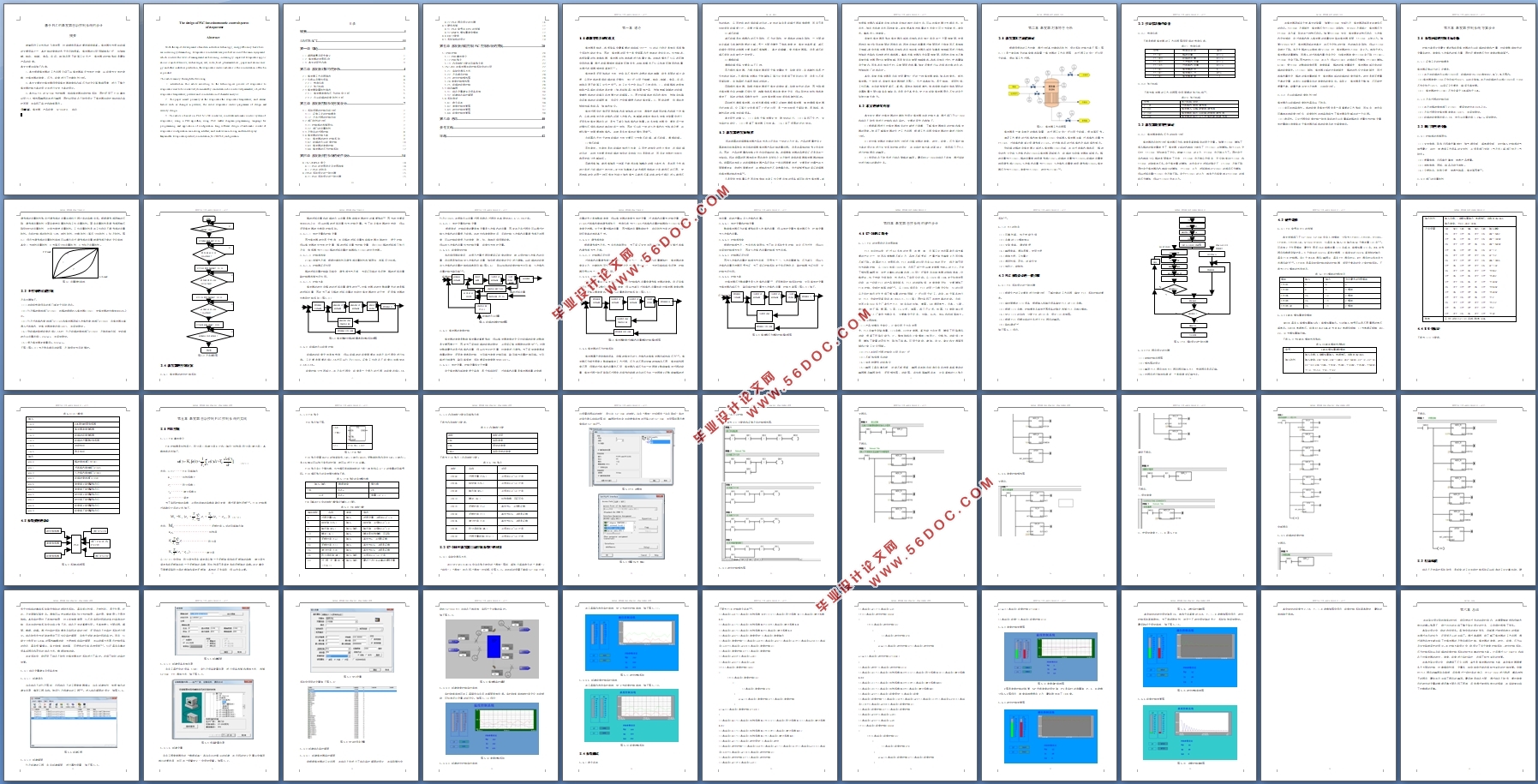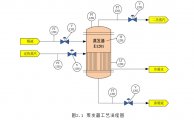基于PLC的蒸发器自动控制系统的设计(任务书,开题报告,外文翻译,论文说明书14000字)
摘要
随着现代工业技术的飞速发展,对能源利用率的要求越来越高。蒸发器作为提纯浓缩的主要设备之一,其控制的管理的水平也日趋提高。蒸发器的应用领域相当广泛,比如制糖、制盐、制碱、食品、医药、造纸及原子能等工业生产,蒸发器的控制指标是最终产品的浓度。
本文主要完成如下内容:
1.本文根据蒸发器的工艺流程介绍了以蒸发器单元为被控对象,以浓度为主被控参数,对蒸发器的温度、压力、浓度进行了对象特性分析。
2.本文主要针对蒸发器所受到蒸发器温度和内部压力的变化等影响因素,进行了整个蒸发器控制方案的设计并进行安全方案的设计。
3.本文以PLC的S7-200为控制器,构成蒸发器自动控制系统,同时采用了PID算法,运用PLC梯形图编程语言进行编程,同时运用组态王软件设计了蒸发器自动控制的组态监控界面,并实现了监控和趋势显示。
关键词:蒸发器 产品浓度 S7-200PLC 组态
The design of PLC-based automatic control system
of evaporator
Abstract
With the rapid development of modern industrial technology , energy efficiency have become increasingly demanding . Evaporator concentrate was purified as one of the main equipment which controls the level of management are becoming increasingly improved. Evaporator applications is quite extensive, such as sugar, salt, soda , food , pharmaceutical , paper and atomic energy and other industrial production, the evaporator control indicator is the concentration of the final product .
This article mainly through the following:
1. introduction this article according to the technological process of evaporator to evaporator unit to be controlled, dominated by concentration be controlled parameters, object the evaporator temperature, pressure and concentration of character analysis.
2. This paper aimed primarily at the evaporator the evaporator temperature, and internal factors such as changes in pressure, the entire evaporator control programme of design and security design.
3. This article is based on PLC S7-200 controller, constitute automatic control system of evaporator, using a PID algorithm, using PLC ladder diagram programming language for programming and application of configuration King software design of automatic control of evaporator configuration monitoring interface, and enables monitoring and trend display.
Keywords: Evaporatorproduct;concentration;S7-200PLC;configuration


目录
摘要 I
ABSTRACT II
第一章 绪论 1
1.1课题背景及研究意义 1
1.2 蒸发器的发展现状 2
1.3 本文的研究内容 3
第二章 蒸发器对象特性分析 4
2.1 蒸发器工艺流程描述 4
2.2 仪表以及操作设备 4
2.2.1 检测仪表 5
2.2.2 执行机构 5
2.3 蒸发器装置特性描述 5
2.3.1 蒸发器温度和压力的综合分析 5
2.3.2 出口浓缩液浓度特性分析 6
第三章 蒸发器控制系统方案设计 7
3.1 系统所需的控制目标分析 7
3.1.1 正常工况的控制要求 7
3.1.2 开车过程的控制目标 7
3.2 阀门特性的分析 7
3.2.1控制阀的选择原则: 7
3.2.2 阀门的流量特性 7
3.3 开停车的过程控制 8
3.4 蒸发器的控制方案 9
3.4.1 蒸发器的液位控制系统 9
3.4.2 浓缩液出口浓度控制 10
3.4.3 蒸发器的温度控制 11
3.4.4 蒸发器的压力控制系统 12
第四章 蒸发器自控系统的硬件设计 14
4.1 S7-200PLC简介 14
4.1.1 PLC的发展状况及发展趋势 14
4.1.2 PLC的特点 15
4.2 PLC系统设计的一般步骤 15
4.2.1 PLC系统设计的一般步骤 15
4.2.2 PLC程序设计的步骤 16
4.3 硬件选择 17
4.3.1 PLC型号与CPU的选择 17
4.3.2 EM235模拟量混合模块 17
4.4 I/O分配表 18
4.5系统架构的设计 19
第五章 蒸发器自动控制PLC控制系统的实现 20
5.1 PID控制 20
5.1.1 PID算法简介 20
5.1.2 PID指令 21
5.1.3 内存地址分配与回路指令表 22
5.2 S7-200在蒸发器自动控制系统中的应用 22
5.2.1 实验中通讯方式 22
5.2.2 开车顺序控制 24
5.2.3 液位控制梯形图 24
5.2.4温度控制梯形图 26
5.2.5 浓缩液浓度控制 28
5.3 组态编程 29
5.3.1 组态变量建立及设备连接 30
5.3.2 新建组态监控画面 32
5.4系统测试 34
5.4.1 命令语言 34
5.4.2 温度控制效果图 37
5.4.3 液位控制效果图 37
5.4.4 浓度控制效果图 38
第六章 总结 40
参考文献 41
致谢 42
|





